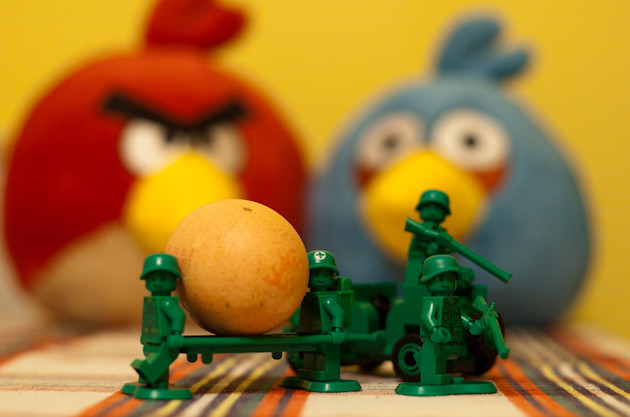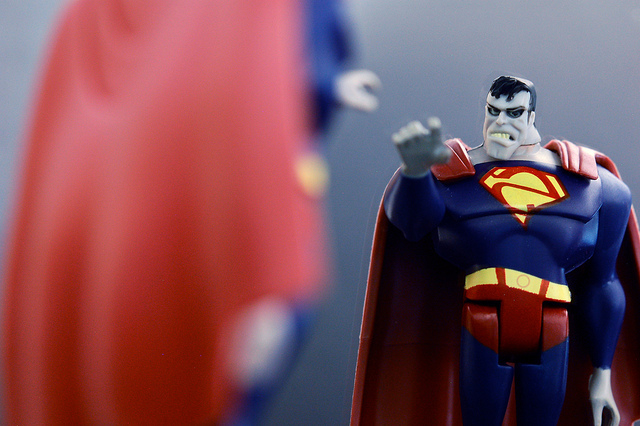Posts Tagged ‘no-to-yes’
Is it novel?
 Agree or not, companies think they have to grow to survive. (I don’t believe it.) For companies of all sizes and shapes, growth is the single most important forcing function. Is has tidal wave power, and whether you’re a surfer, sailor or power-boater, it’s important to respect it. More than that, when push comes to shove, it’s the only wave in town.
Agree or not, companies think they have to grow to survive. (I don’t believe it.) For companies of all sizes and shapes, growth is the single most important forcing function. Is has tidal wave power, and whether you’re a surfer, sailor or power-boater, it’s important to respect it. More than that, when push comes to shove, it’s the only wave in town.
Companies’ recipe for growth is simple: make more, sell more. And some keep it simpler: sell more.
The best growth: sell new products or provide new services to new customers; next best: sell new to the same customers; next next best: sell more of the same to the same customers. The last flavor is the easiest, right up until it isn’t. And once it isn’t, companies must come up with new things to sell. That works for a while, until it doesn’t. Then, and only then, after exhausting all other possibilities, companies must create real newness and try to sell it to strangers.
The model works well as long as everyone in the industry follows it. But when an up-start outsider enters the market back-to-front, the wheels fall off. When they develop useful newness before you and sell it to your customers (new customers for them), that’s not good. And that’s why it’s so important to start with different — right now.
To help your company do more work that’s different, start with an inventory of your novelty. Novel work is work that creates difference, and that difference can be defined only in comparison with the state-of-the-art (what is, or the baseline system). Start with a functional analysis of your state-of-the-art. Create a block diagram of your business model, your most successful product and the service that defines your brand. Take a look at your technology and new product development projects and flag the ones that will create things that aren’t on your three functional analyses. (Improvement projects, because they improve what is, cannot be flagged as novel.)
Put all your novelty on one page and decide if you like it. (No way around it, how you respond to the level and type of novelty in your quiver is a judgment call.) If you like what you see, keep going. If you don’t, stop some improvement projects and start some projects that create useful novelty. The stopping will not come easy. Existing projects have momentum and people have personal attachment to them. The only thing powerful enough to stop them is the all-powerful growth objective. If company leaders learn the existing projects won’t meet the growth objective, the tidal wave will sweep away some lesser projects to make room for new ones.
There will be great internal pressure to add projects without stopping some, but that won’t work. Everyone is fully booked and can’t deliver on additional projects even if you tell them to. If you’re not willing to stop projects, you’re better off staying the course and waiting until you finish one before you start a project to increase your novelty score.
Novelty is good because there’s more upside potential, and improvement is good because there’s more certainty. One is not better than the other. You need both.
In the end, you’re going to have to judge if you’re happy with what you’ve got. That’s a difficult task that no one can make easier for you. But it is possible to use your judgment better. If you can clearly call out what’s novel and what’s not, you’re on your way.
Image credit – s3aphotography (image cropped)
Innovation isn’t a thing in itself.
 Innovation isn’t a thing in itself, and it’s not something to bolster for the sake of bolstering.
Innovation isn’t a thing in itself, and it’s not something to bolster for the sake of bolstering.
Innovation creates things (products, services, business models) that are novel, useful and successful. It’s important to know which flavor to go after, but before that it’s imperative to formalize the business objective. Like lean or Six Sigma, innovation is a business methodology whose sole intention is to deliver on the business objective. The business objective is usually a revenue or profit goal, and success is defined by meeting the objective. Successful is all about meeting the business objective and successful is all about execution.
There are a lot of things that must come together for an innovation to be successful. For an innovative product here are the questions to answer: Can you make it, certify it, market it, sell it, distribute it, service it, reclaim it? As it happens, these are the same questions to answer for any new product. In that way, innovative products are not different. But because innovation starts with novel, with innovative products the answers can be different. For an innovative product there are more “no’s” and for each no there’s a reason that starts with a C: constraint, capacity, capability, competitor, cooperation, capital. And the business objective cannot be achieved with closing the gaps.
After successful, there’s useful. Like any work based on a solid marketing methodology, innovation must deliver usefulness to the customer. Innovation or not, strong marketing is strong marketing and strong marketing defines who the customer is, how they’ll use the new service, and how they’ll benefit – the valuable customer outcome (VCO.) But with an innovative service it’s more difficult to know who the customer is, how they’ll use the service and if they’ll pay for it. (That’s the price of novelty.) But in most other ways, an innovative service is no different than any other service. Both are successful because they deliver usefulness customers, those customers pay money for the usefulness and the money surpasses the business objective.
Innovation is different because of novelty, but only in degree. Continuous improvement projects have novelty. Usually, it’s many small changes consistently applied that add up to meaningful results, for example waste reduction, improved throughput and product quality. These projects have novelty, but the novelty is the sum of small steps, all of which stay close to known territory.
The next rung on the novelty ladder is discontinuous improvement which creates a large step change in goodness provided to the customer. (Think 3X improvement.) The high degree of novelty creates broader uncertainty. Will the customer be able to realize the goodness? Will the novelty be appealing to a set of yet-to-be-discovered customers? Will they pay for it? It is worth doing all that execution work? Will it cannibalize other products? The novelty is a strong divergence from the familiar and with it comes the upside of new customer goodness and the downside of the uncertainty.
The highest form of novelty is no-to-yes. No other product on the planet could do it before, but the new innovative one can. It has the potential to create new markets, but also has the potential to obsolete the business model. The sales team doesn’t know how to sell it, the marketers don’t know how to market it and the factory doesn’t know how to make it. There new technology is not as robust as it should be and the cost structure may never become viable. There’s no way to predict how competitors will respond, there’s no telling if it will pass the regulatory requirements. And to top it off, no one is sure who the customer is or if anyone will it. But, if it all comes together, this innovation will be a game-changer.
Innovation is the same as all the other work, except there’s more novelty. And with that novelty comes more upside and more uncertainty. With novelty, too much of a good thing isn’t wonderful. Sufficient novelty must be ingested to meet the business objective, and a bit more for the long term to stay out in front.
Be clear about business objectives, deliver usefulness to customers and use novelty to make it happen. And call it whatever you want.
Image credit – Agustin Rafael Reyes
Battle Success With No-To-Yes
 Everyone says they want innovation, but they don’t – they want the results of innovation.
Everyone says they want innovation, but they don’t – they want the results of innovation.
Innovation is about bringing to life things that are novel, useful and successful. Novel and useful are nice, but successful pays the bills. Novel means new, and new means fear; useful means customers must find value in the newness we create, and that’s scary. No one likes fear, and, if possible, we’d skip novel and useful altogether, but we cannot. Success isn’t a thing in itself, success is a result of something, and that something is novelty and usefulness.
Companies want success and they want it with as little work and risk as possible, and they do that with a focus on efficiency – do more with less and stock price increases. With efficiency it’s all about getting more out of what you have – don’t buy new machines or tools, get more out of what you have. And to reduce risk it’s all about reducing newness – do more of what you did, and do it more efficiently. We’ve unnaturally mapped success with the same old tricks done in the same old way to do more of the same. And that’s a problem because, eventually, sameness runs out of gas.
Innovation starts with different, but past tense success locks us into future tense sameness. And that’s the rub with success – success breeds sameness and sameness blocks innovation. It’s a strange duality – success is the carrot for innovation and also its deterrent. To manage this strange duality, don’t limit success; limit how much it limits you.
The key to busting out of the shackles of your success is doing more things that are different, and the best way to do that is with no-to-yes.
If your product can’t do something then you change it so it can, that’s no-to-yes. By definition, no-to-yes creates novelty, creates new design space and provides the means to enter (or create) new markets. Here’s how to do it.
Scan all the products in your industry and identify the product that can operate with the smallest inputs. (For example, the cell phone that can run on the smallest battery.) Below this input level there are no products that can function – you’ve identified green field design space which you can have all to yourself. Now, use the industry-low input to create a design constraint. To do this, divide the input by two – this is the no-to-yes threshold. Before you do you the work, your product cannot operate with this small input (no), but after your hard work, it can (yes). By definition the new product will be novel.
Do the same thing for outputs. Scan all the products in your industry to find the smallest output. (For example, the automobile with the smallest engine.) Divide the output by two and this is your no-to-yes threshold. Before you design the new car it does not have an engine smaller than the threshold (no), and after the hard work, it does (yes). By definition, the new car will be novel.
A strange thing happens when inputs and outputs are reduced – it becomes clear existing technologies don’t cut it, and new, smaller, lower cost technologies become viable. The no-to-yes threshold (the constraint) breaks the shackles of success and guides thinking in a new directions.
Once the prototypes are built, the work shifts to finding a market the novel concept can satisfy. The good news is you’re armed with prototypes that do things nothing else can do, and the bad news is your existing customers won’t like the prototypes so you’ll have to seek out new customers. (And, really, that’s not so bad because those new customers are the early adopters of the new market you just created.)
No-to-yes thinking is powerful, and though I described how it’s used with products, it’s equally powerful for services, business models and systems.
If you want innovation (and its results), use no-to-yes thinking to find the limits and work outside them.
Are you doing innovation?
 If you’re not thinking differently, you’re thinking the same. And if you’re thinking the same, you’re going to get the same. Same may feel safe, and at some level it is. But when sameness festers into staleness, too much of a good thing isn’t wonderful.
If you’re not thinking differently, you’re thinking the same. And if you’re thinking the same, you’re going to get the same. Same may feel safe, and at some level it is. But when sameness festers into staleness, too much of a good thing isn’t wonderful.
In our fast moving Bizzaro World, safe is dangerous; repeatable is out and remarkable is in; improving what is is displaced by creating what isn’t; more capacity is outlawed and new capability is the only way; growing existing markets is wasteful because it gets in the way of creating new ones.
Ask your company leaders if they’re doing innovation, and the answer is yes. It’s a loaded question, and nothing good can come of it. “No, we don’t do innovation.” is a career-limiting response. Here are two better questions: What are you doing that’s different? What are you doing differently? These questions are effective because they require answers that are relative – relative to what you used to do. And because innovation starts with different, these questions are a good start.
Our assembly process is different and we increased productivity 0.3%; our product design is different and we made it stronger by 2.1%; our customer service tools are different and we decrease waiting time by 1.7%; our plastics are different and we reduced product cost by 0.6%. The difference is clear, but it didn’t really make a difference. Innovation starts with different, but all different isn’t created equal. Instead of shades of gray, think binary, think black to white, think no to yes.
Here are some better questions:
- Have we stopped distracting ourselves by focusing on growth of our biggest markets?
- Did we change the value proposition with our new product?
- Have we increased sales people in the undeveloped markets at the expense of sales people in our biggest markets?
- Do our new technologies change the argument?
- Are we working on the new products that will obsolete our most profitable product?
- Does the new product do less of anything so it can do more of something else?
- Are we working on the technologies so we can sell into Africa?
- Are we hiring experts in mobile technology?
- How about experts in data science?
There’s no hard and fast definition of what makes for the right no-to-yes thinking but their telltale sign is their wake of oblique problems. If your organization doesn’t know how to do something, then it could be an indication of powerful no-to-yes behavior. For example, if your translations group doesn’t know how to translate into a new language requested by sales, it could be because a new region of the world is now important. If your sales managers want to use a new search firm because your longstanding one can’t find the right new candidates, it may be because your new product demands a new flavor of sales people. If your compensation structure doesn’t let you make an acceptable offer to an engineer you really need, it could be because you need to hire for new specialties from different industries with radically different compensation norms.
“Are you doing innovation?”, as a question, is not skillful. Instead, do the work so you must sell where you haven’t sold; use materials you’ve never used; use technologies you’ve never heard of; hire people you never had to hire; and create problems related to new geographies and new languages. And when someone asks “Are you doing innovation?”, tell them you used to, but you’ve found something better.
Image credit – JD HANCOCK PHOTOS
 Mike Shipulski
Mike Shipulski